I’ve had more than one query about the blade I featured some time ago:
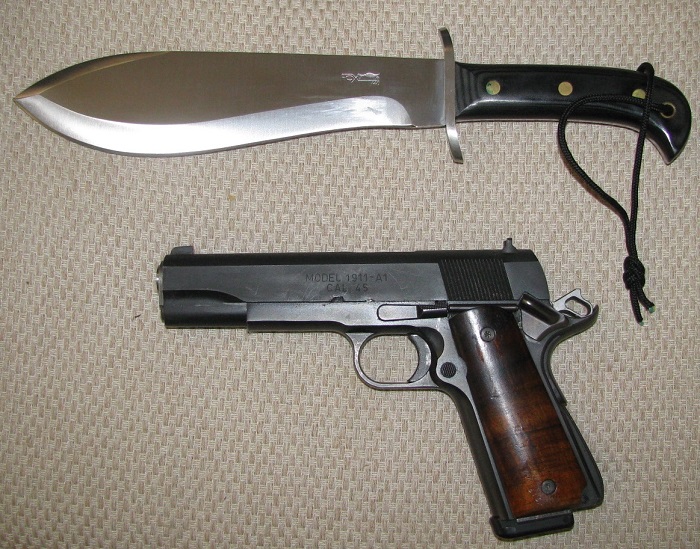
It’s a Fox 685 “Trekking” knife (made in Maniago, Italy), and it was a birthday present from longtime Friend and Reader Bob K.
Pretty, innit?

Things that make men go “Oooooh!”
I’ve had more than one query about the blade I featured some time ago:

It’s a Fox 685 “Trekking” knife (made in Maniago, Italy), and it was a birthday present from longtime Friend and Reader Bob K.
Pretty, innit?
Following a link from Reader Jabrwok’s comment on this post, I ended up here (video), where this Scando-lass(?) opens up a coconut. Good grief, what a schlep.
Which makes me think: if you’re doing serious bush work, ignore that lil’ knife she’s using. Use a serious blade like this one (pictured next to a 1911, for scale):

If I knew I was heading anywhere that even looked like I’d end up in the boonies, you’d better believe that this puppy would be on my hip.
So after having ogled the cars etc. in the exhibition area (and the avenue leading into the exhibition, see yesterday’s post), Your Humble Narrator ambled off to the auction hall, where sundry items of deliciousness were to be found, pre-auction. Once more, I shall say but little, just post a few examples. The model dates are approximate, for reasons which will become apparent later.
1963 MG:
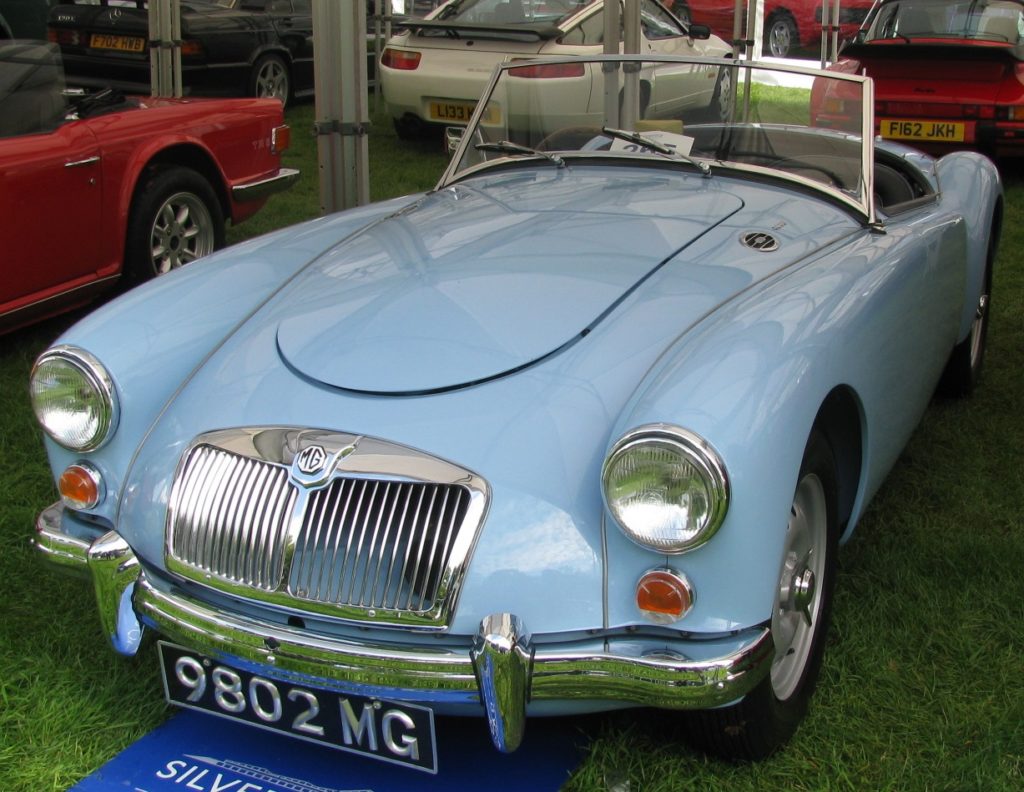
1950 Jaguar Mk V:
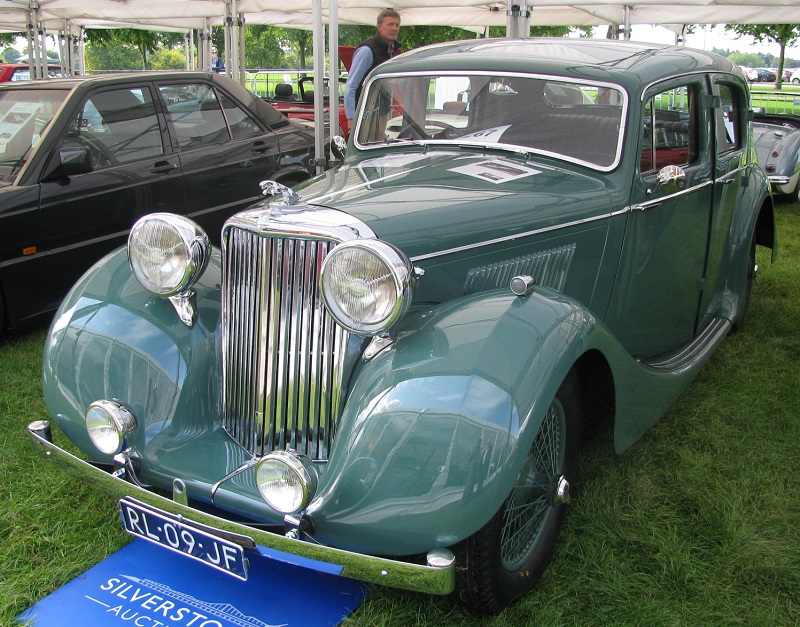
1958 Mercedes 300S:
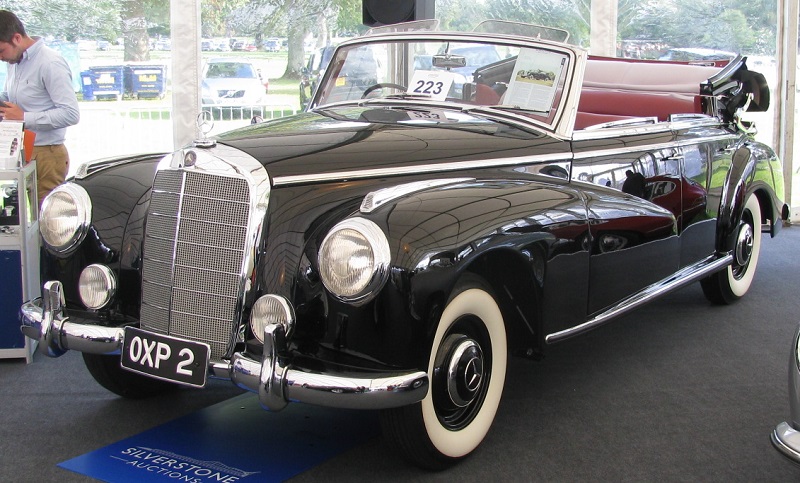
1962 Sunbeam Tiger:
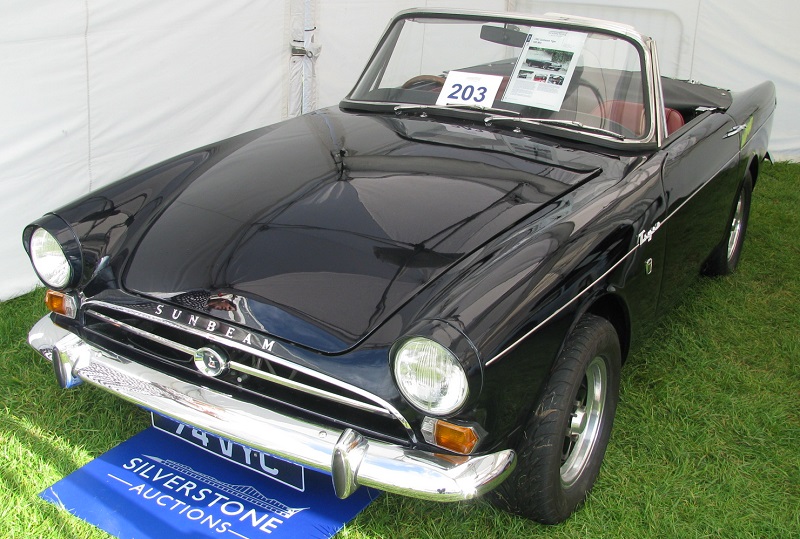
1965 Lancia Flavia (This car was so beautiful — the picture does not do it justice — that I wanted to marry it so that it could bear my children. Suffice it to say that of all the automotive pulchritude on display, even Mr. FM had found it memorable.)
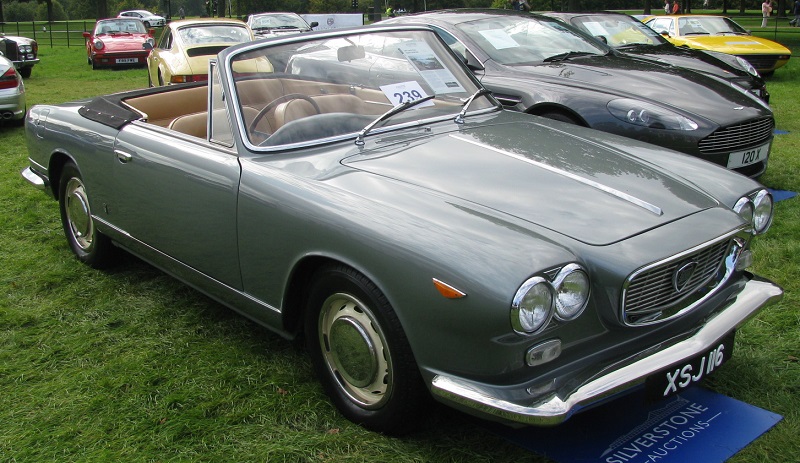
1958 Jaguar XK 140:
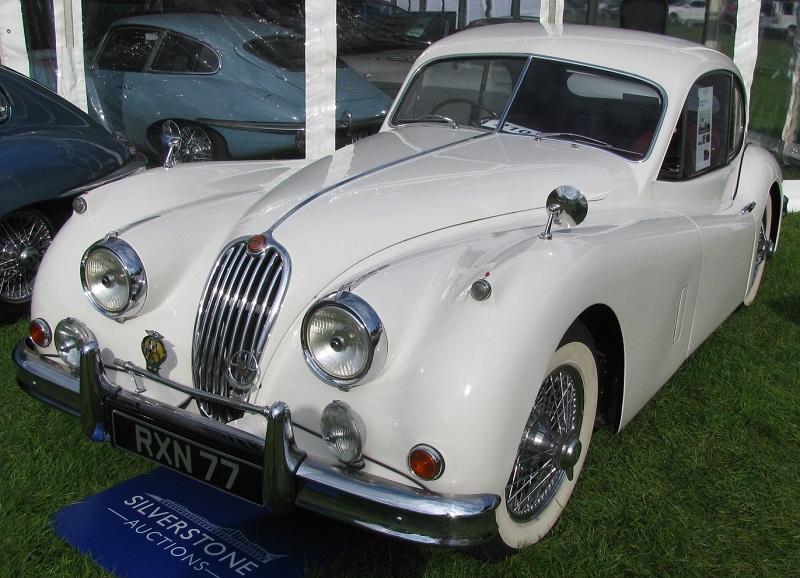
Now, I have to confess that Mr. FM was getting somewhat impatient, tapping his watch and muttering something about “getting going before darkness falls”. Also, I have to confess that by this point, some six hours since our arrival, I was starting to feel the effects of the open bar at the Privé — let’s just say that I’d consumed fairly substantial quantities of wine, champagne and J&B — and I think Mr. FM was trying to spare me from the indignity of loud proposals of marriage to some of the cars. At least, that’s what I thought at the time.
So he bundled me into the Range Rover and off we went — but curiously, not along the same road we’d come in on. Instead, he took an abrupt turn off the main road and plunged down into a series of hills and dales along an allegedly two-lane road that was so narrow, I would have had trouble riding a Fiat 500 down it without grazing both rearview mirrors on the roadside hedgerows. Then, as the evening sun was getting close to the horizon and we reached the bottom of a valley, he pulled off onto a small piece of open land and said, “You might want to take a picture of this.”
And I did; more than one. First, the house of (I think) the owner of the property:

…followed by a couple of vistas:


Good grief. Words cannot describe the beauty of the Cotswolds. You just have to see it for yourself.
Then we went home, and Mr. FM and I finished the day’s festivities off by imbibing vast quantities of whisky before retiring for the night.
Altogether, an unforgettable day, and one for which I will be eternally grateful to my gracious host.
So yesterday, Mr. FM dragged me kicking and screaming to something called a “Salon Privé”, an annual shindig held on the grounds at Blenheim Palace, home of the Duke of Marlborough. (I say “dragged” in the sense of “invited”; the “kicking and screaming” actually came later, when it was time to go.)
What is this Salon thing, you ask? It’s a classic car exhibition and auction (more of which in Part 2 of this account, tomorrow).
So as we swept up the driveway towards the Duke’s little pad,

I was oohing an aahing at the exquisite cars assembled:
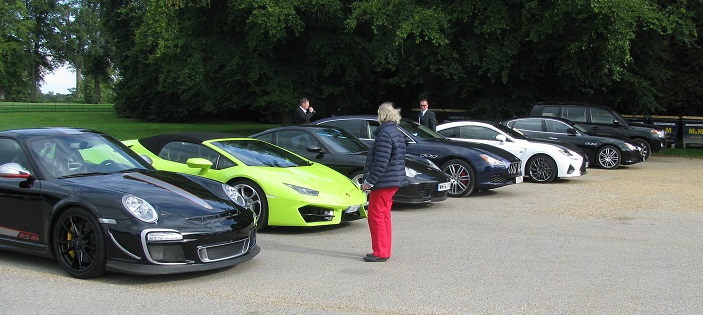
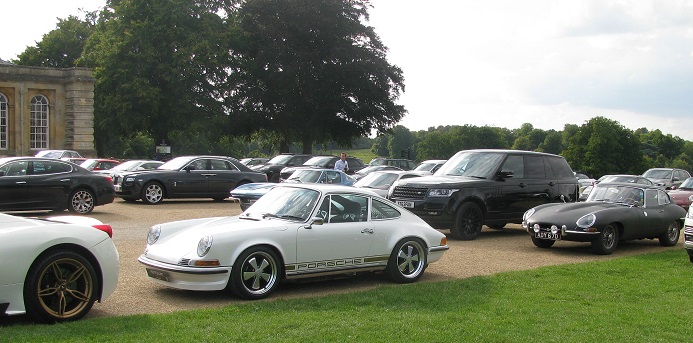
…whereupon Mr. FM dryly informed me, “Dear heart, this is just the parking lot; the exhibition is on the other side of the house.”
Oh.
So we wandered down the alley of cars:
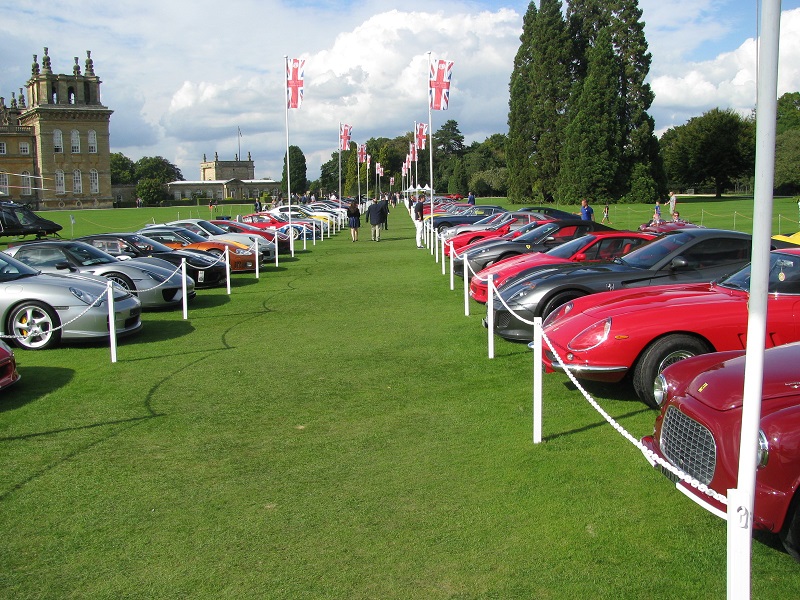
…until we got to the exhibition itself.
Ahem.
I will say no more, just post a few of the dozens of pictures I took. First, the Jag XK120:
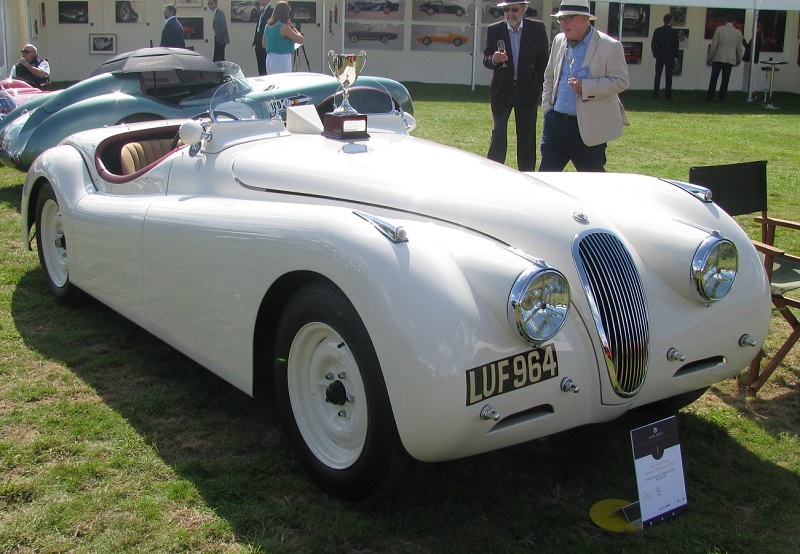
A couple of (the many) Ferraris:
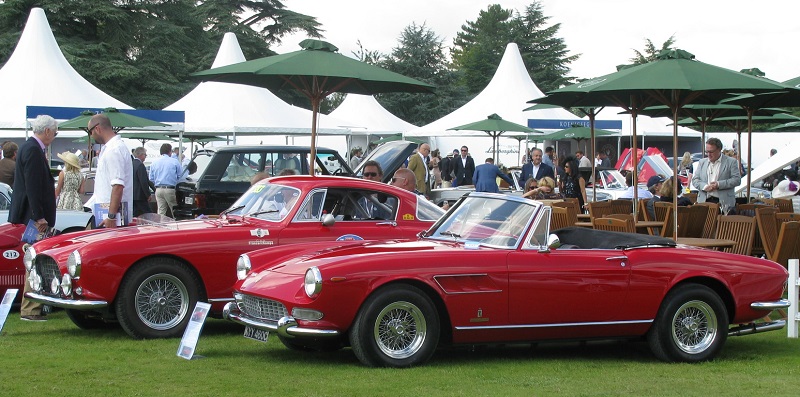
Aston Martin DB4 GT Zagato
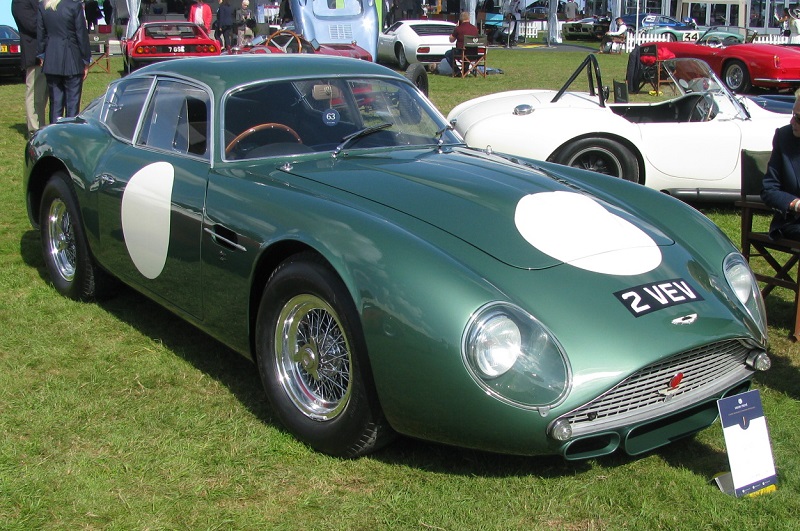
Mercedes 300 SL:

Some 356 Porsches:
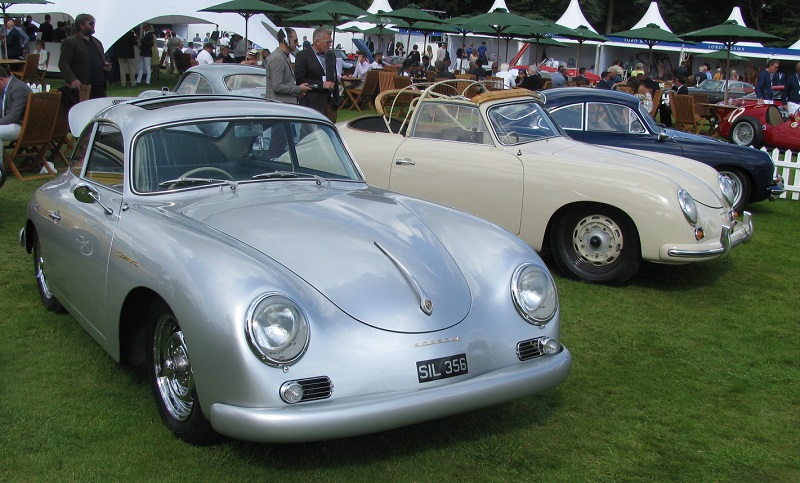
There were also a few shouty cars (aimed at the Russian / Arab Oil Oligarch’s Son Set, no doubt):

…but we’ll say no more about them. Instead, here’s a Bentley Tourer from the 1930s:
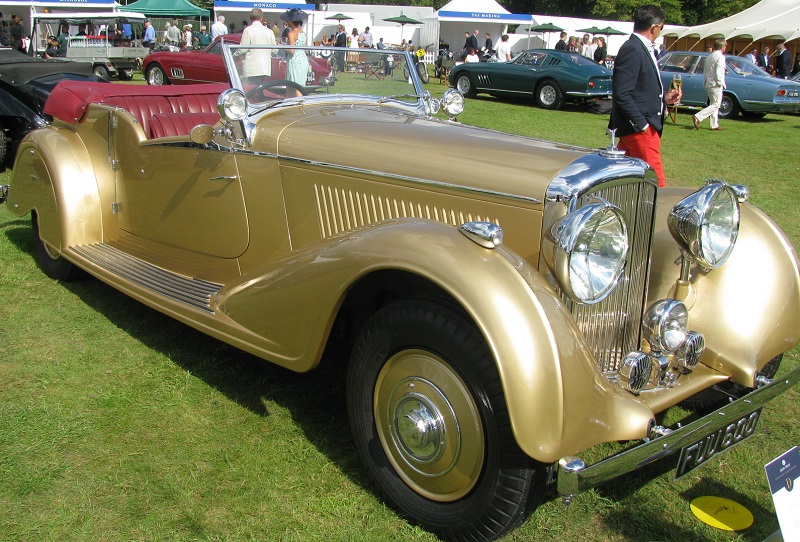
…which was, too, somewhat shouty (i.e. foul), except when properly decorated:
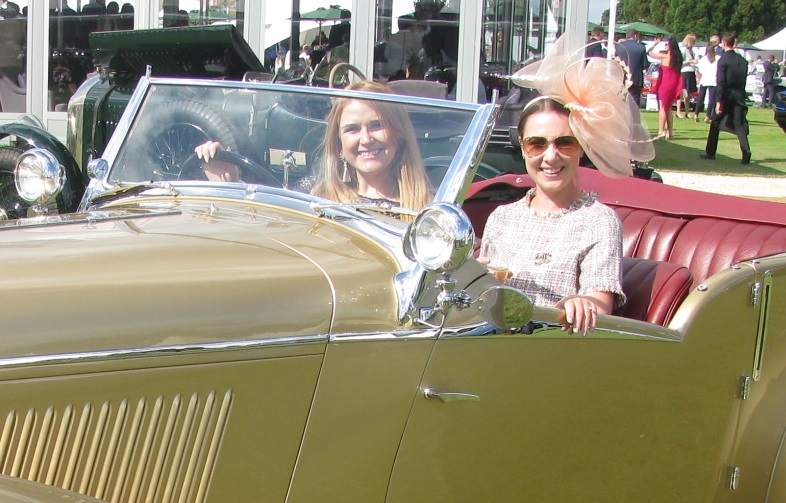
Speaking of decoration, there was lots of it:



…and one lovely young lady even asked me to take her pic in front of her car:
Heavens be praised, not a Train Smash Woman in sight. Just a couple more car pics. First, an Atalanta Sport:
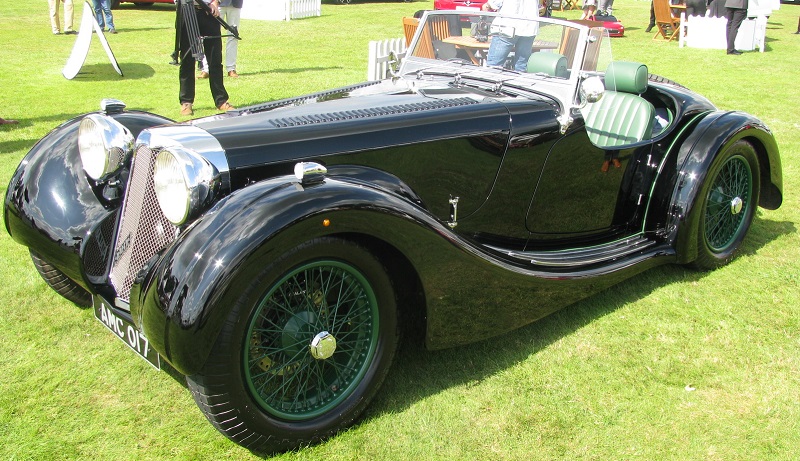
Jaguar XJ220 (one of my favorite “modern” Jags:
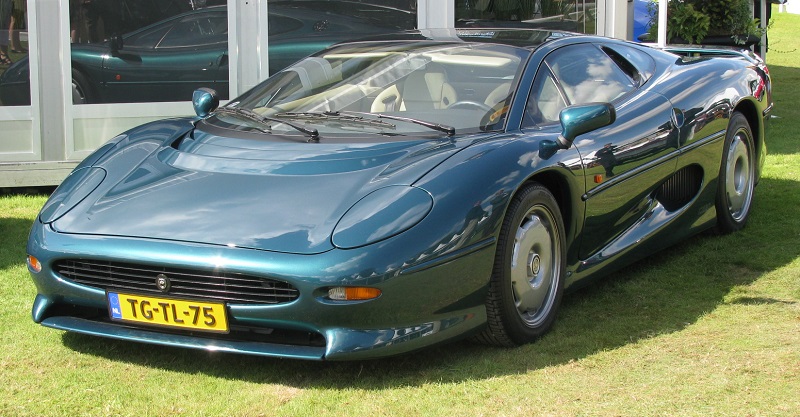
…and standing out like a dog turd on a table cloth, this thing:
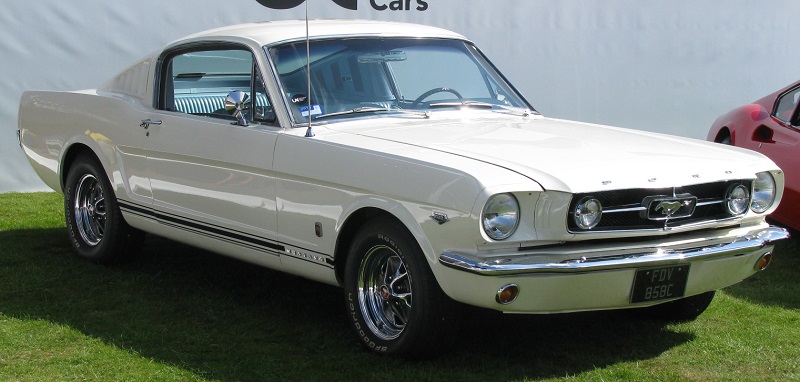
…which looked all the more ridiculous when you consider what was standing next to it:

But let me end this post with something of an overview:
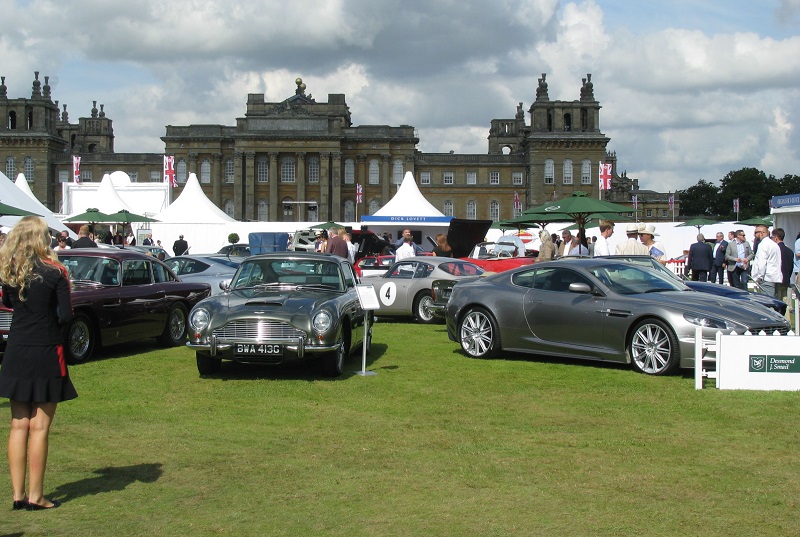
Tomorrow, we’ll look at what was available on auction.
I have always thought that a sports car should resemble a woman lying on her side: the front-wheel arches resembling the shoulders, the middle of the car falling away like the midsection, and the (larger) rear-wheel arches mimicking the swell of the hips.

Hence the beauty of Ferrari’s Dino 246 GT, my love for which has been well documented on these pages, and which resembles the slender female models of its era in the early 1970s:
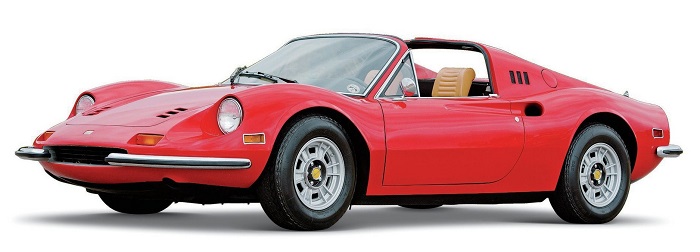
What then, do we make of Ferrari’s new Portofino, which replaces the superb California?

Here’s what I see: it looks block-y and more muscular — more like a model who’s been working out in the gym who should look something like this:

…except that the Portfino doesn’t look like that either.
I know, I know: so much of today’s automotive design is shaped by what works in a wind tunnel as opposed to actual, you know, beauty. But Ferrari, at least until recently, seems to have been keeping the old proportions alive — which is why their cars have typically looked better than anyone else’s. I’m just not so sure about the Portofino.
(Please note that I’m only comparing the designs — the Portofino’s top speed of 198 mph dwarfs the Dino’s 145 mph.)
Update: Reader askeptic points out that Ferrari, or at least their ad agency, used to share my sentiments. Note the ad from a later era:
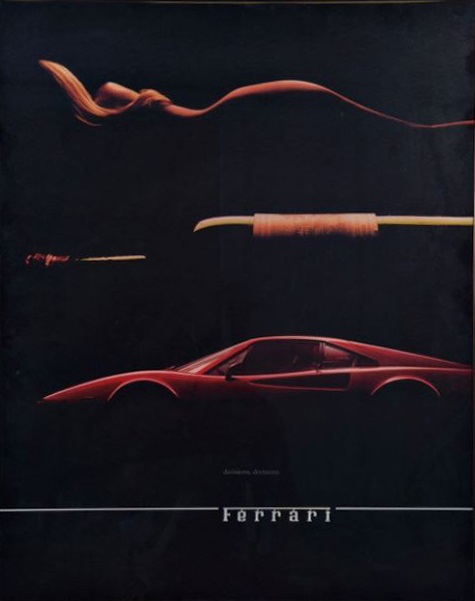
Wrong Ferrari, however: the 308 looked like Twiggy, not Veruschka.

In my first post on this topic, I looked at roadsters in their original concept: simple, economical fun. Today I’m going to look at a development of the concept, which added performance — mostly, it should be said, in terms of speed, but also comfort: bigger, better suspension and so on, all at (of course) a steeper price.
It began almost at the same time as MG were bringing out their early TA model, when the SS Motor Company (later Jaguar) produced their SS Jaguar 100 model, which unlike the earlier Mercedes SSK was designed not for the track but for touring.
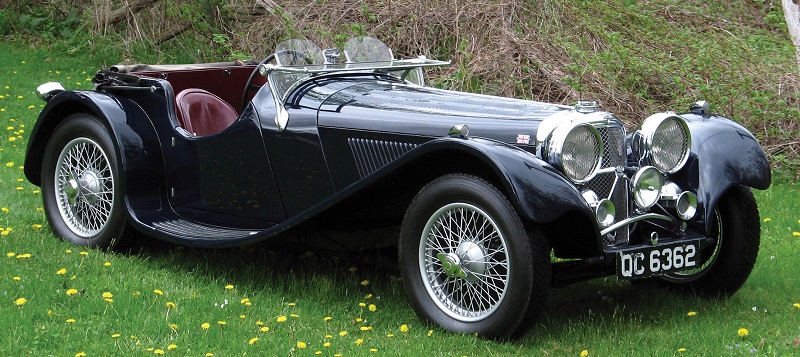
It had a brute of an engine (3.0-liter inline six-cylinder, compared to the TA’s 1.3-liter four-banger) and a top speed of just over 100mph. The popularity of these cars, by the way, can be seen by the fact that almost every one you see nowadays is a replica, not a rebuilt original.
Of course, these cars could be raced, and they were. Sports car racing was big at the time, so there were all sorts of cars like this: Bentley, Mercedes, Alfa Romeo (to name but some) all had a hand in the game, and in the U.S., there were Duesenbergs, Cords and Auburn (to name but some of them).
I’m not a fan of big, brute cars; I prefer the smaller touring models to the racers: modestly sized but still with decent performance. Hence I tend to prefer the SS 100’s successor, the exquisite Jaguar XK 120:

I also prefer the smaller German models like the later 190 SL:
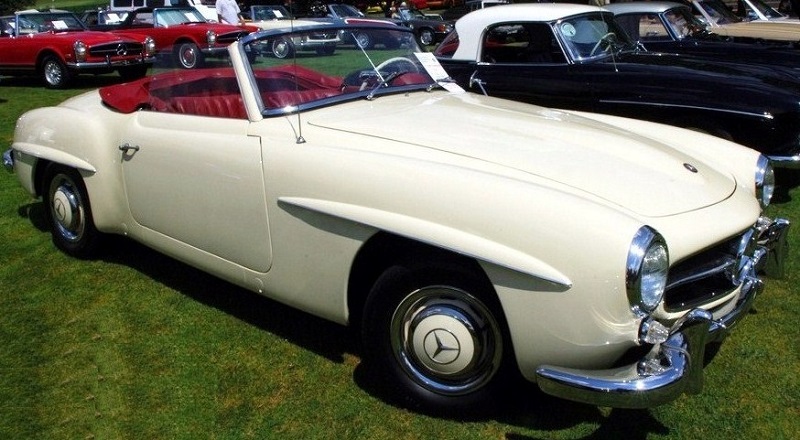
…which is really the budget version of racing monsters like the 300 SL Gullwing.
In the U.K. again, the little MGA sports car begat the Austin-Healey with its powerful 3-liter engine (but with the same legendary unreliability of its smaller cousin):
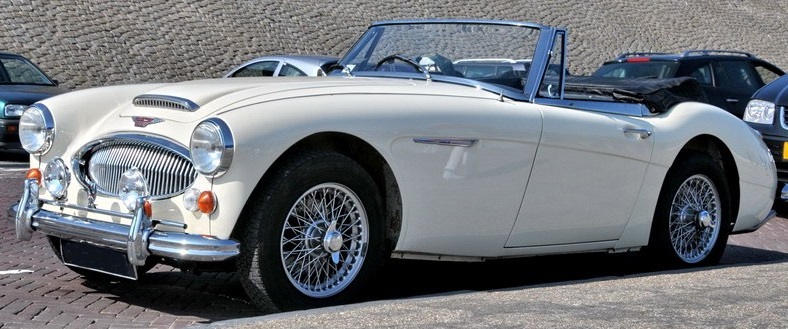
Now on to the present, or rather, the recent present. One of the problems of car manufacturing is that it’s so damn expensive. Only large corporations can build cars profitably, because of both economies of scale and the fact that they can subsidize their more interesting (and less popular) models with mass-market versions. And sadly, performance touring cars are a niche market. Even BMW can keep their excellent 650 touring models in production only because they sell boatloads of 330s, 530s and 750s.
And with a lovely segue, we come upon Wiesmann touring sports cars. Started by the two eponymous brothers in the late 1980s, Wiesmann produced what I think are some of the most beautiful cars made in the modern era. Here’s their MF-3, which uses a BMW M3 3-liter 6-cyinder engine:
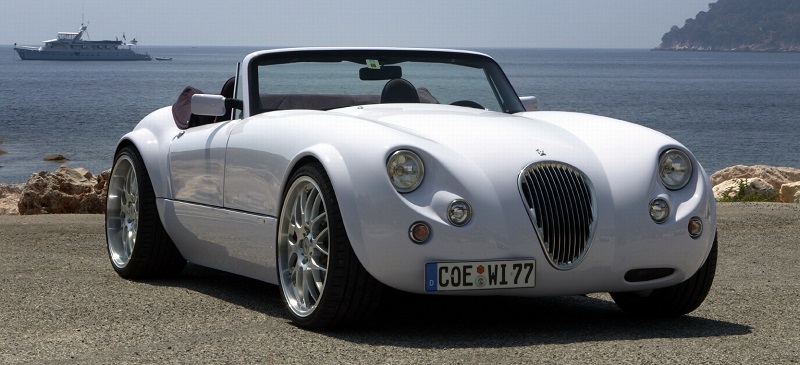
…and if you’re thinking that it looks rather like the Jaguar XK 120 above, you’d be correct. Unlike the older XK, though, which had a spartan interior, Wiesmann gave the lucky driver this cockpit to play in:
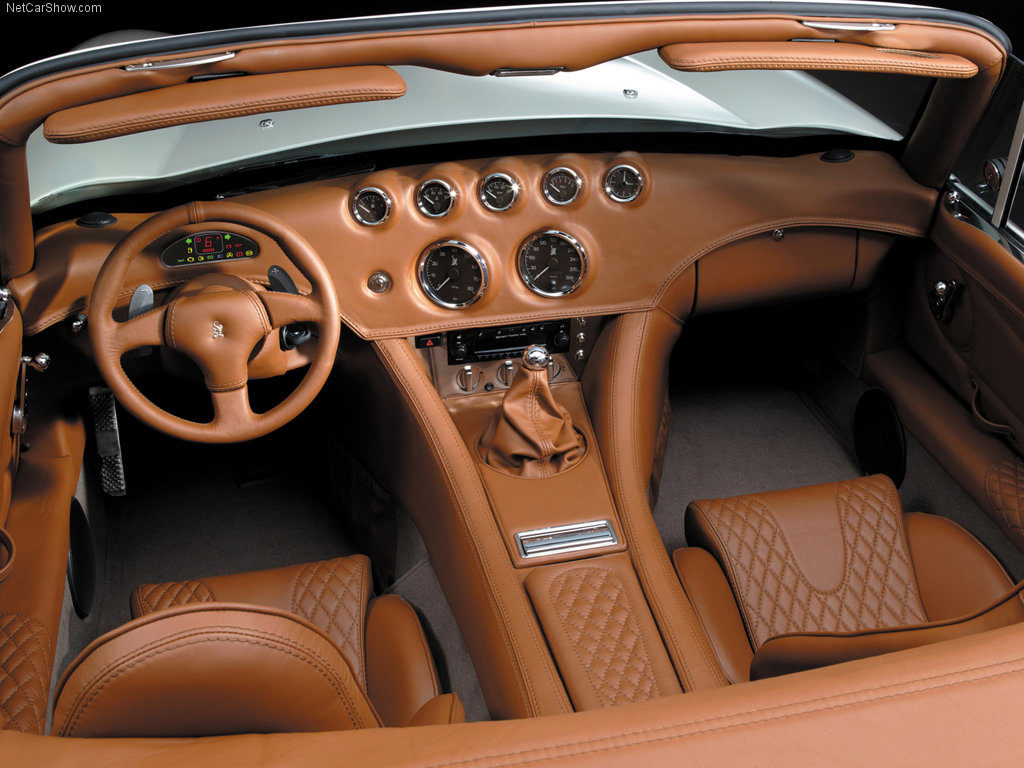
Note the manual transmission, which is the default offering (you could get an automatic gearbox, but that would be a gross betrayal).
Later versions had the monster 4.4-liter BMW engines, which didn’t add that much power, but did turn an already-expensive proposition into an exorbitant one — which limited their market.
Sadly, Wiesmann went out of business in 2014, because their cars required too much money to convert them into US roadworthiness and the high (hand-built) cost limited their European market — these are people who want to tour, not race, so you’re not going to get the Ferrari-Porsche Set to buy one.
The same can be said for Aston Martin cars, by the way:
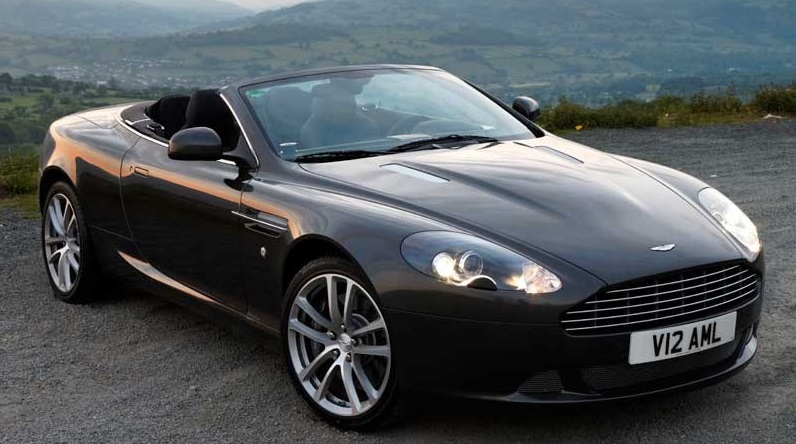
They’re ridiculously expensive and yet (still) a little too unreliable for people who want to (say) drive from San Diego to Maine, or Free Market Towers to Naples.
But because Aston Martin is a British company, they will always have wealthy customers in the UK who don’t want to drive a European (read: German) car, and who also don’t mind a little bit of unreliability because remember: one shouldn’t have too much fun while enjoying oneself.